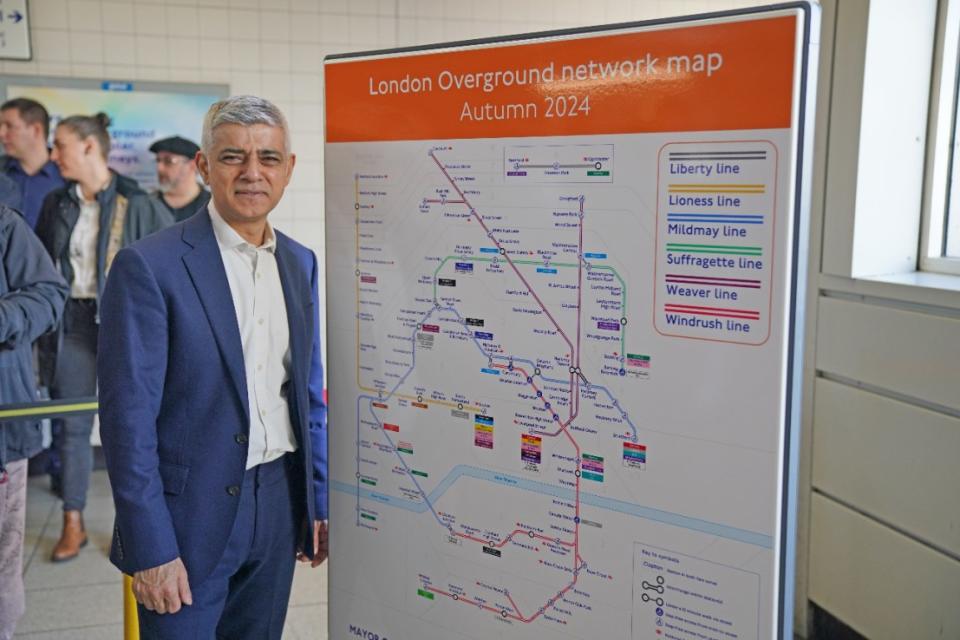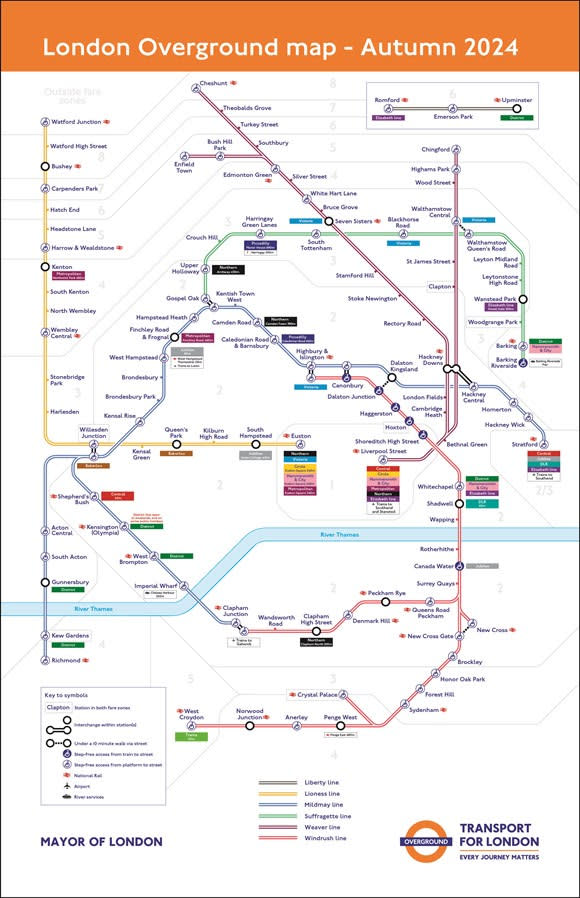Mildmay, Weaver and Liberty: What do the London Overground’s new names actually mean?

The London Overground’s six lines have been renamed and given their own colours, significantly changing the Tube network’s world-famous map.
The move from Transport for London (TfL) comes after research found customer journeys on Overground routes were significantly more confusing due to the lines being labelled with one single colour and name.
The Tube map was created by the draughtsman Harry Beck in 1933 and has become recognisable around the globe.
The six Overground lines are currently only marked with one colour, orange, and it has been nicknamed the Ginger line.
Mayor Sadiq Khan hailed the developments as “hugely exciting” and a celebration of “different parts of London’s unique local history and culture.”
But Susan Hall, the conservative party candidate for the mayorship, described it as “virtue signalling nonsense” and said money would be better spent in improving services on the Central Line and wider TfL network.
What are the new Overground line names and what do they mean?
Euston to Watford Junction, which runs through Wembley, will be changed to the Lioness line in honour of the achievements and legacy created by the England women’s football team. It will be yellow parallel lines on the Map.
Stratford to Richmond/Clapham Junction will be renamed the Mildmay line in honour of the small charitable hospital in Shoreditch which played a pivotal role in the HIV/AIDS crisis in the 1980s and is highly respected by the LGBTQ+ community today. It will be blue parallel lines on the map.
Highbury and Islington to Clapham Junction/New Cross/Crystal Palace/West Croydon will be called the Windrush line. It runs through areas with strong ties to Caribbean communities today, such as Dalston Junction and the name honours the Windrush generation. It will be red parallel lines on the map.
Liverpool Street to Chsehunt/Enfield Town/Chingford will be named the Weaver line, as it runs through Liverpool Street, Spitalfields, Bethnal Green and Hackney; parts of London historically known for their textile trade. It will be maroon parallel lines on the map.
Gospel Oak to Barking Riverside will be changed to the Suffragette line, in celebration of the working-class movement in the East End, which fought for votes for woman and paved the way for women’s rights. The line also runs to Barking, home of the longest surviving Suffragette Annie Huggett, who died at 103. It will be green parallel lines on the map.
Romford to Upminister will be renamed the Liberty line, referencing the historical independence of the people of Havering, through which it runs. It will be grey parallel lines on the map.


 Yahoo Finance
Yahoo Finance 